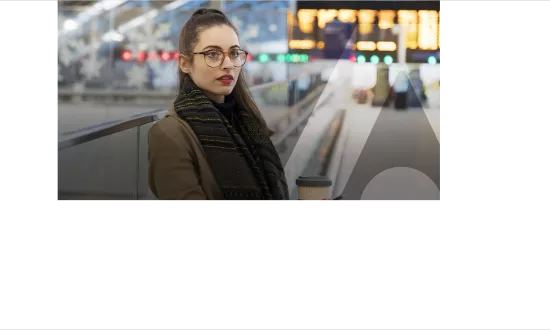Smart stations
Happier passengers, lower energy bills and improved safety are among the benefits of Thales’ smart station technology for main lines
You need eyes everywhere to run a railway station. You also need to react rapidly when an incident occurs – or better still, predict what might go wrong and then take action before it happens.
The good news is that there are now plenty of ways to monitor and control what happens on stations. These include everything from CCTV and passenger information to SCADA networks for controlling lifts, escalators and air conditioning.
The bad news is that coordinating all of these different functions is often next to impossible. This can be a real problem – particularly in an emergency, when actions need to be synchronised at lightning speed across multiple systems.
Functional fragmentation also has an impact on the day-to-day passenger experience. For example, real-time passenger information and crowd avoidance capabilities both depend on being able to orchestrate multiple subsystems. But all too often, integration is just too complex and passengers miss out. So what can be done?
Action stations
Thales’ integrated digital supervision system solves the problems of fragmentation by centralising control of critical functions on a cybersecured IT platform, with a unified and consistent human-machine interface, full subsystem coordination and a wealth of brand new, data-driven functions.
Let’s take a look at some of those functions in more detail:
Better passenger information: passengers need accurate, real-time information that is relevant to their journey. To meet this need, our solution combines static data (such as timetables) with dynamic data from live operational systems, such as train describers and signalling systems. The result: value-added passenger information, delivered via a single platform to feed any media channel – mobile apps, interactive kiosks, displays and public address.
Crowd avoidance: which carriages of an approaching train are least crowded? Passengers want to know – and now they can. Our intelligent crowd monitoring and guidance solution uses Thales’ video analytics solution to automatically measure passenger density on trains. Crowding data is then relayed to passenger information displays on the platform. All of this is achieved using existing equipment’s in the infrastructure: ticketing, CCTV cameras and/or counting sensors. The same technology can be used to generate crowding heat maps and alarms for stations.
Energy savings: Dedicated Energy KPI dashboards provides an overview of the overall energy consumption giving the ability at the OCC to monitor and reduce the overall consumption by simulating and applying low consumption strategies. For instance, passenger density data generated by Thales video analytics software makes it possible to reduce electricity consumption on stations. For example, air conditioning output, lighting levels, heating and ventilation can all be continuously varied based on station occupancy, reducing energy consumption and improving environmental performance.
Intrusion detection: unauthorised access to railway infrastructure is a growing cause of delays. But it can be detected easily with video analytics. Applications include detection of trespassing on tracks, tunnels, bridges and other sensitive areas. Our integrated supervision solution automatically generates an alert and provides the operator with options for power management, passenger information and, in some cases, traffic management as well.
Guiding hand: information overload is a very real concern for control centre staff. To solve this problem, Thales has developed decision procedure tools that help operators to get the most out of the systems under their control – including video, traffic management, power, auxiliaries and public announcements. If a fire breaks out on a station, for example, decision procedure tools allow a single operator to monitor the relevant CCTV cameras, place calls to the emergency services, shut down power and broadcast automated emergency announcements – all from the same workstation.
Remote operations: supervision of railway operations is normally carried out from dedicated control centres. But what if you need to work remotely – for example, on platforms, on trains, or even on the track? Thales’ remote secure OCC (operation control centre) answers this need. The solution is delivered via an application that runs on a secure mobile device. A number of different functions can be supervised, including lifts, lighting, escalators and air conditioning.
Your solution for stations large and small
The beauty of our fully-integrated solution is that it can be used to supervise main line stations of any type. For example, it can be configured to meet the complex needs of a large city-centre transport hub. It can equally be used to remotely manage multiple small stations scattered across a large geographical area, delivering huge economies.
But whether large or small, the beauty of our solution is that it provides rail users everywhere with the same high level of certainty, security and passenger satisfaction – increasing ridership and helping to build a future we can all trust.

